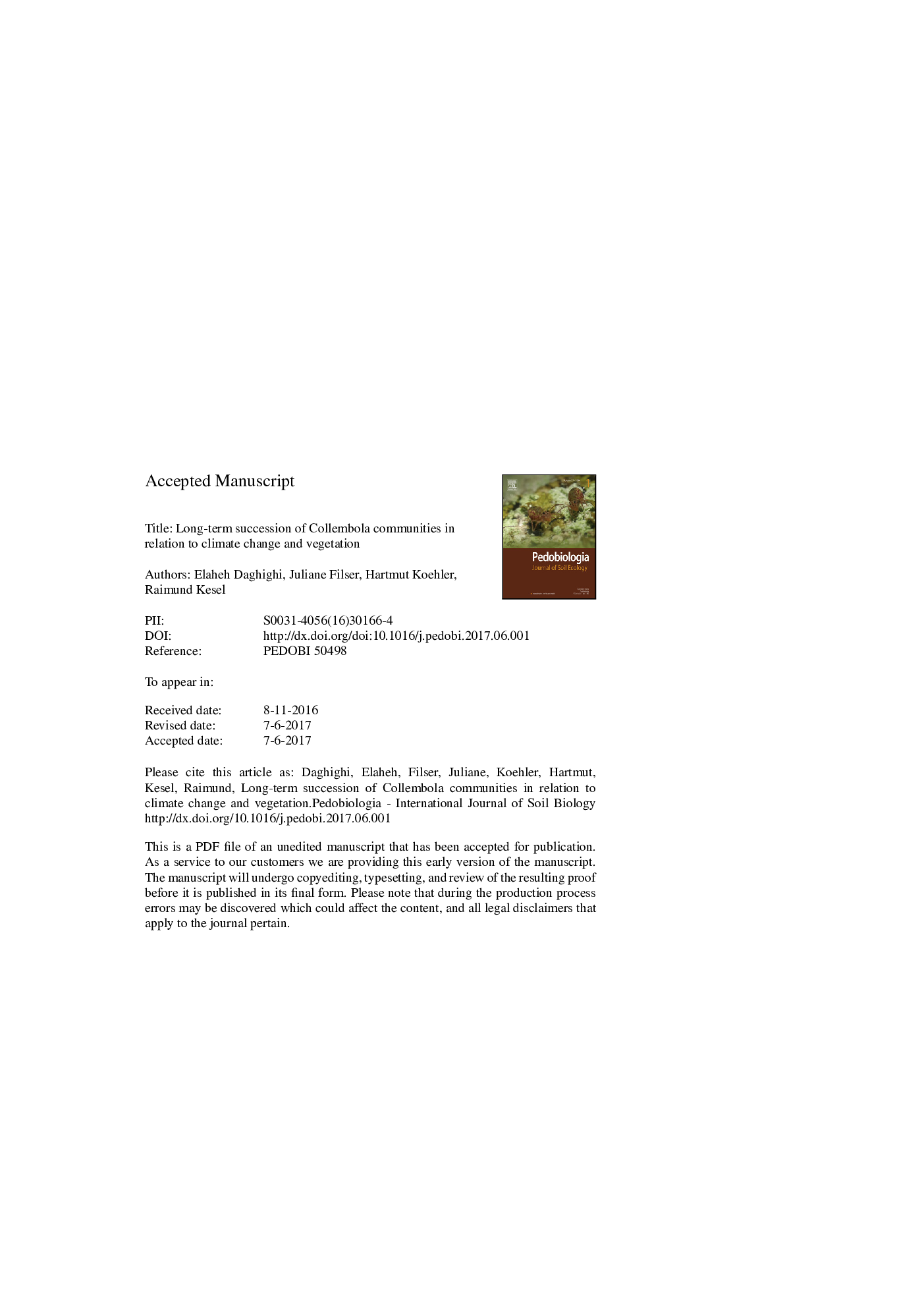| Article ID | Journal | Published Year | Pages | File Type |
|---|---|---|---|---|
| 8392619 | Pedobiologia | 2017 | 52 Pages |
Abstract
The successional dynamics of Collembola communities on a rubble and debris dump in Bremen, Germany were studied between 1980 and 2000 in two experimental plots. One plot (SUC) was left undisturbed for natural secondary succession, the other plot (REC) was recultivated with rotary-tilling and sowing of grass. The mean Collembola abundance varied between 4 and 119 thousand ind. mâ2 on SUC and between 6 and 92 thousand ind. mâ2 on REC. In the two plots individual numbers peaked in the first decade, thereafter they decreased. Number of species varied from 9 to 17 on SUC with a very slight increase over time and from 8 to 17 on REC with only a temporary depression in 1998. The alpha diversity calculated as Shannon-Weaver and Simpson-indices increased in both plots. The lowest species turnover rate occurred between 1990 and 1994 on SUC and between 1981 and 1982 on REC, indicating the lowest diversity in species composition. During the whole succession, species composition changed more or less irregular in the two plots. With 74%, the dominance similarity (Renkonen index) of the Collembola communities between SUC and REC was greatest two years after the beginning of succession. As a result from CCA analysis, confirmed by linear regression analyses, Collembola total abundance and species composition (dominances) were significantly affected by annual (Oct-Sep) mean air and soil temperature (â10Â cm), increasing over the study period of twenty years. Ordination scores of Collembola species abundance on the CCA axes revealed four climatic groups of Collembola: cold-dry, cold-wet, warm-wet and warm-dry. A correlation of Collembola species abundance with vegetation cover was not found. Nevertheless, stronger effects of climatic variables were found on REC, which had a shorter vegetation than SUC, creating a different microclimate. Successional dynamics of Collembola communities in the studied plots are correlated with temporal shifts of species between early and late years of succession, but are also significantly influenced by soil temperature.
Related Topics
Life Sciences
Agricultural and Biological Sciences
Animal Science and Zoology
Authors
Elaheh Daghighi, Hartmut Koehler, Raimund Kesel, Juliane Filser,
